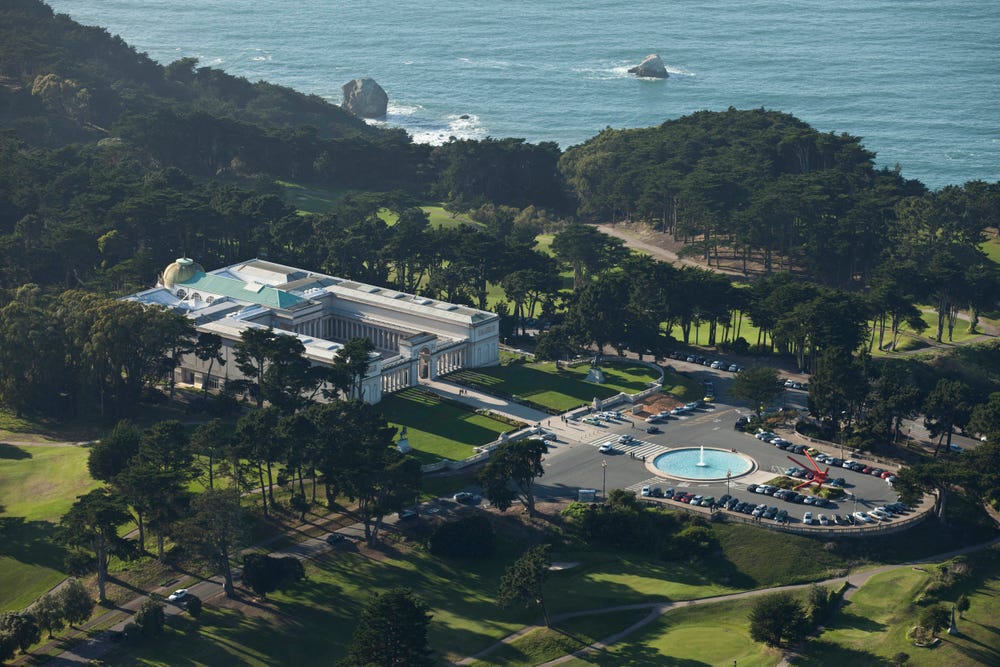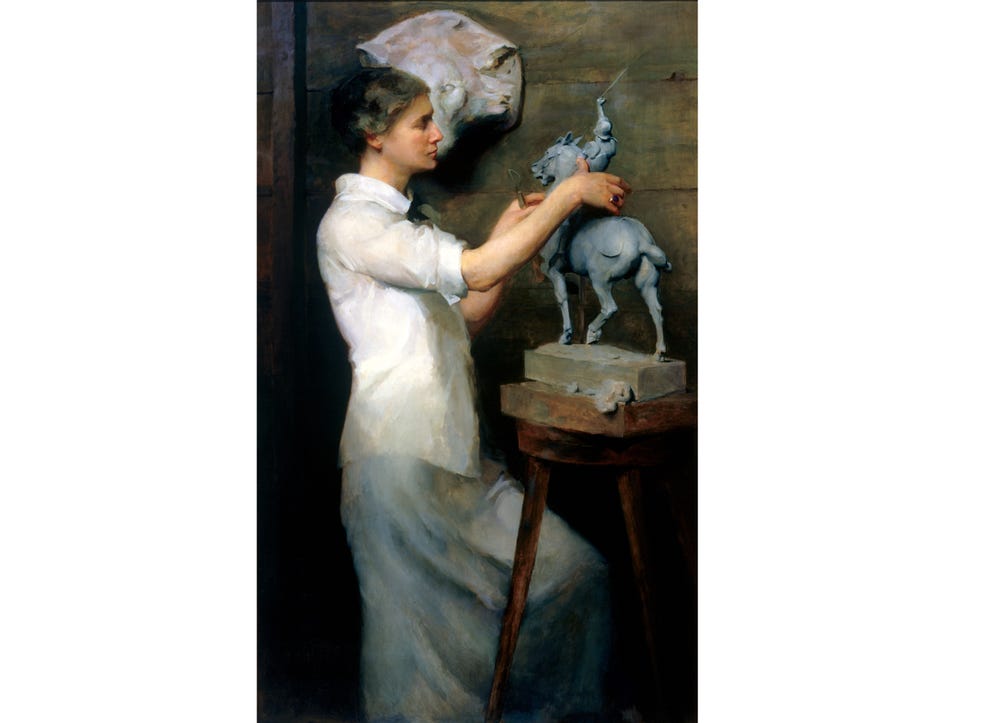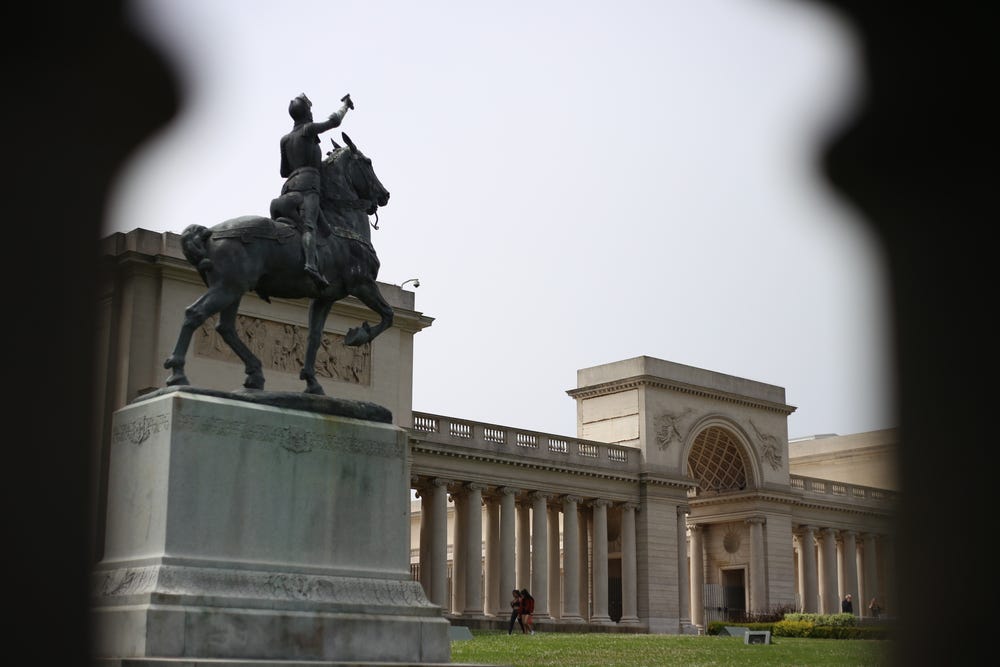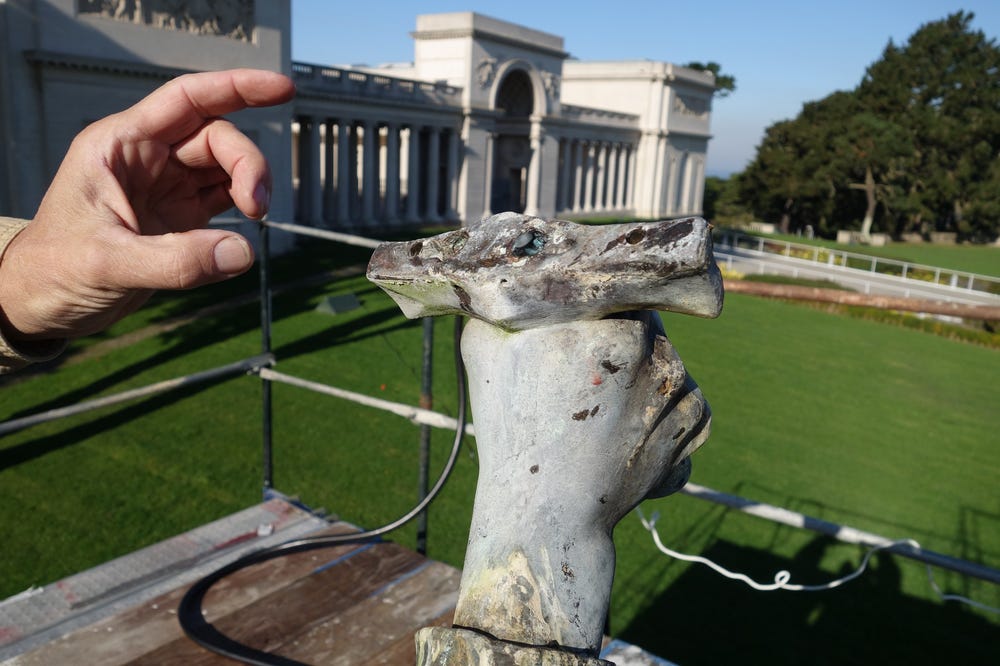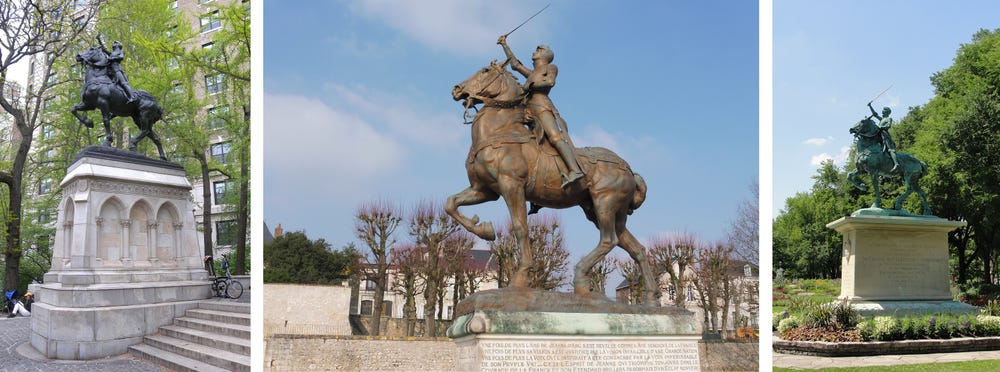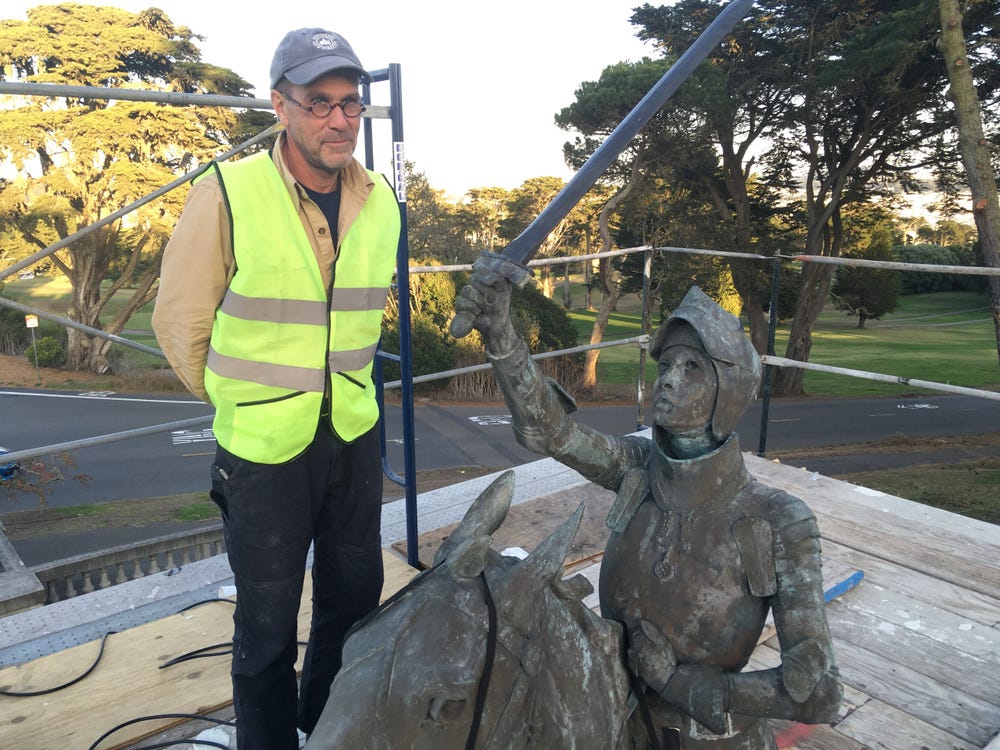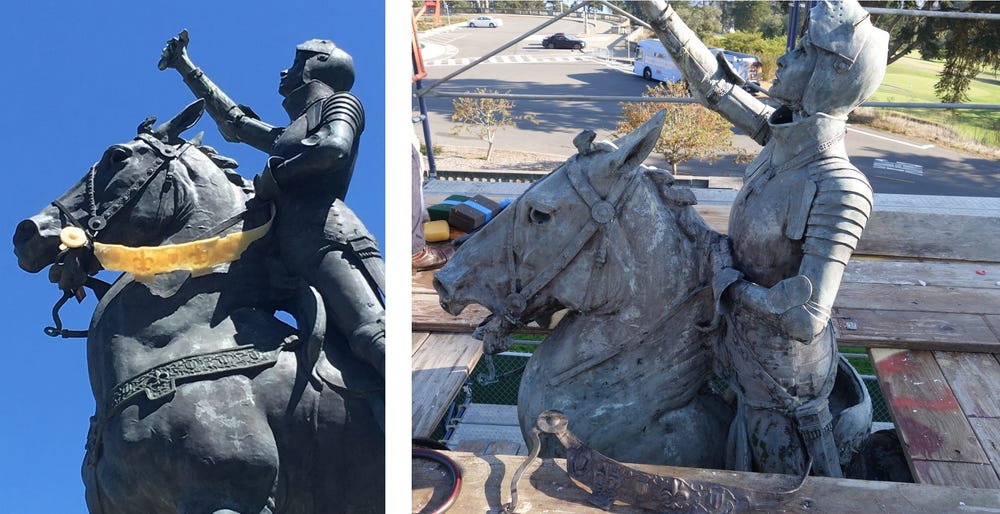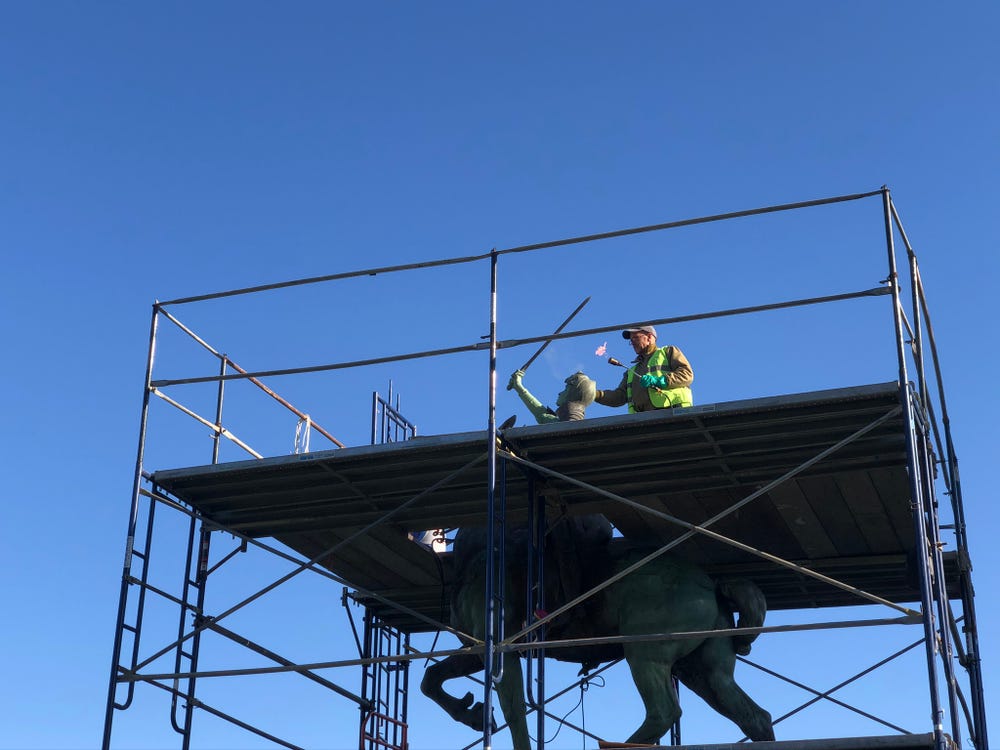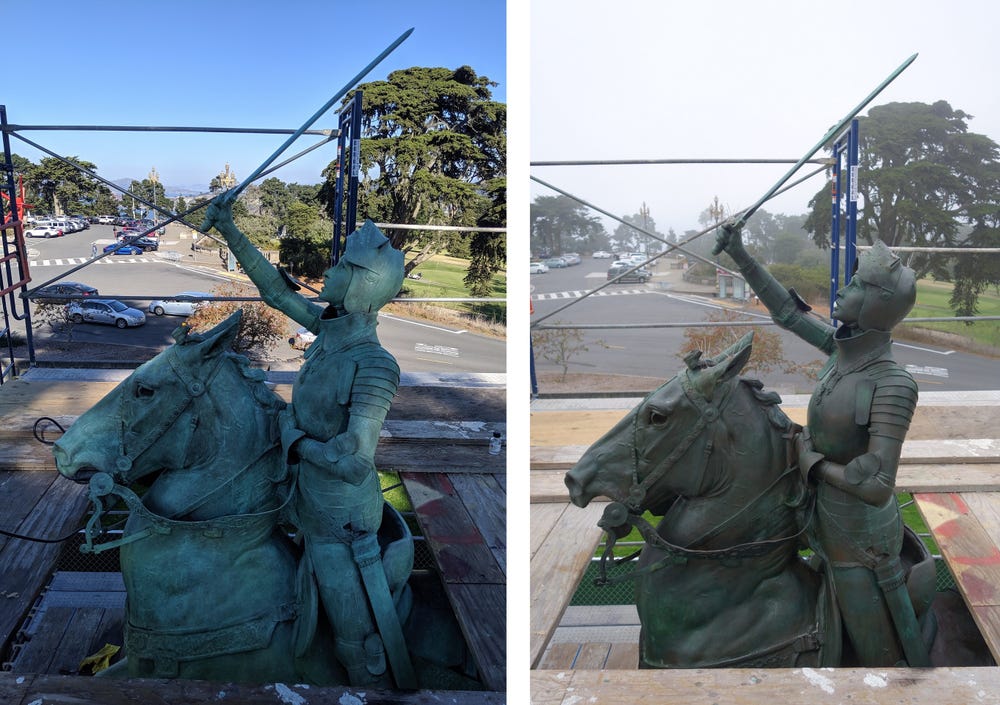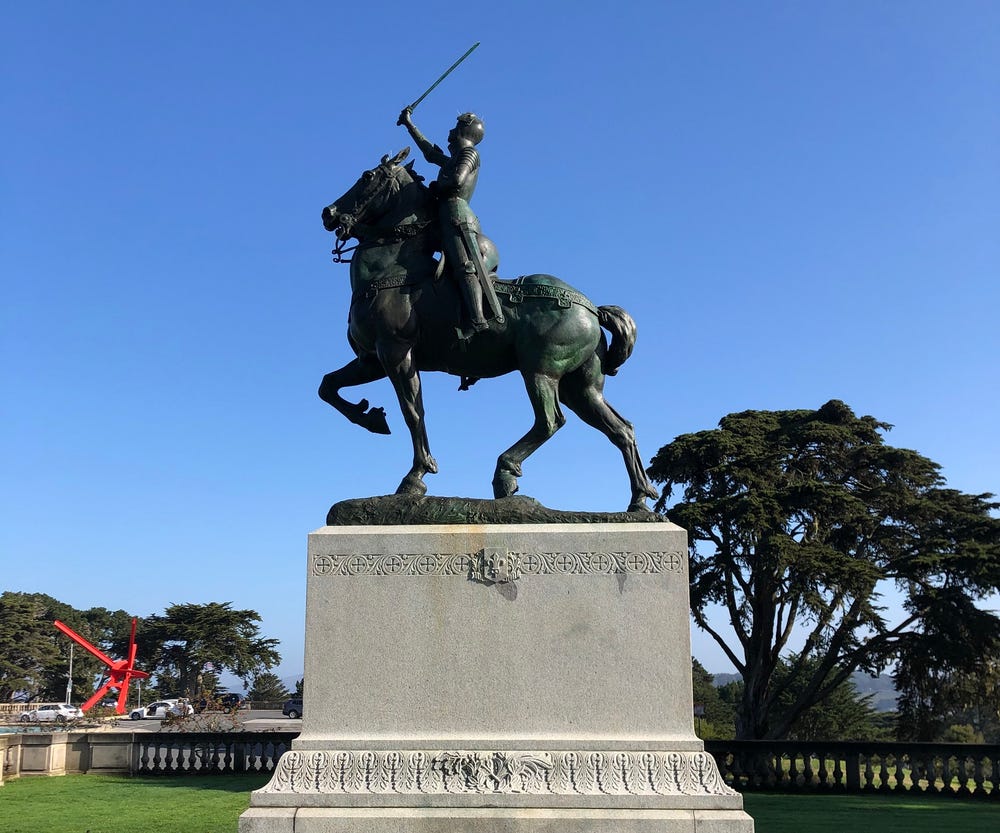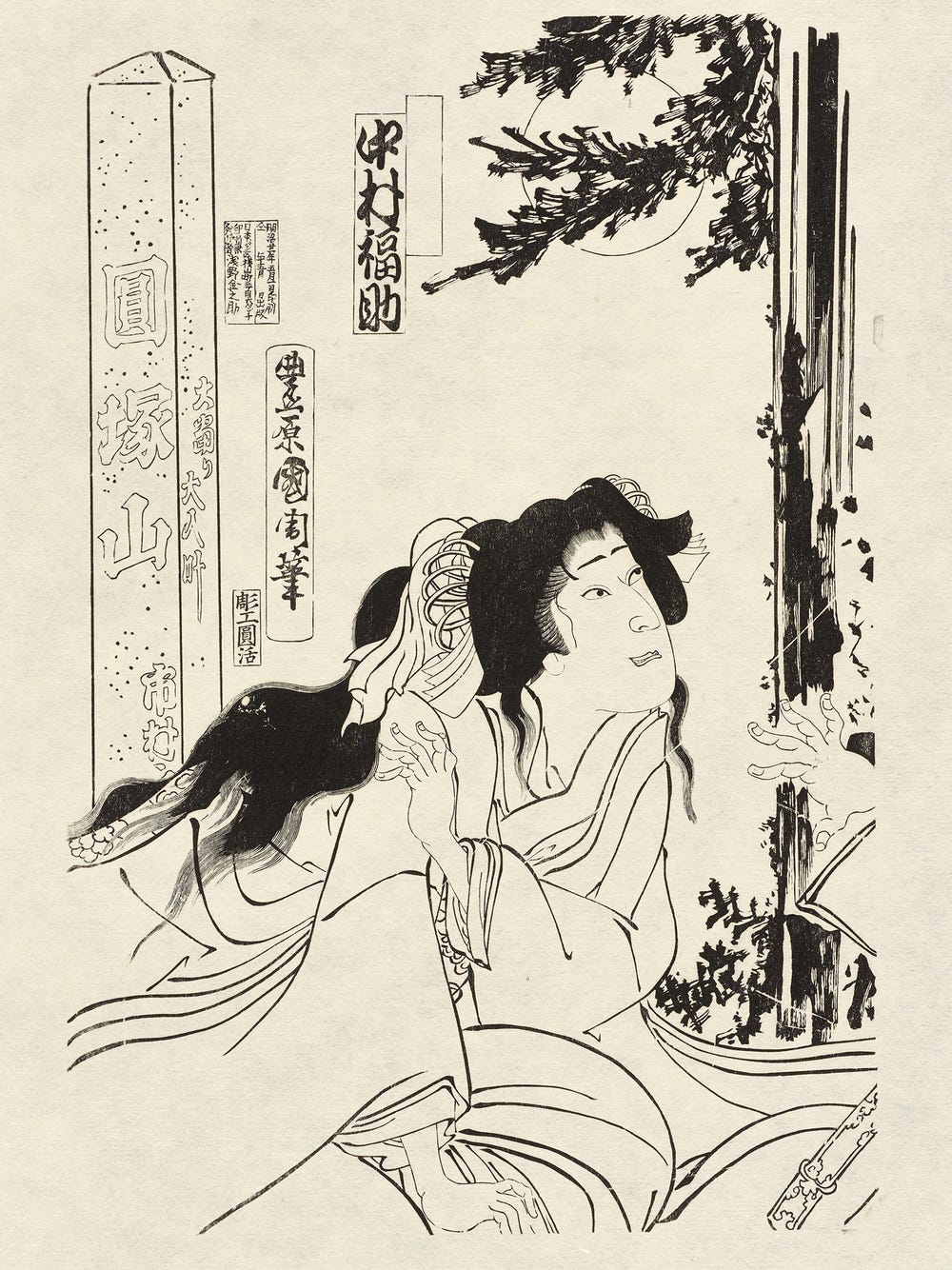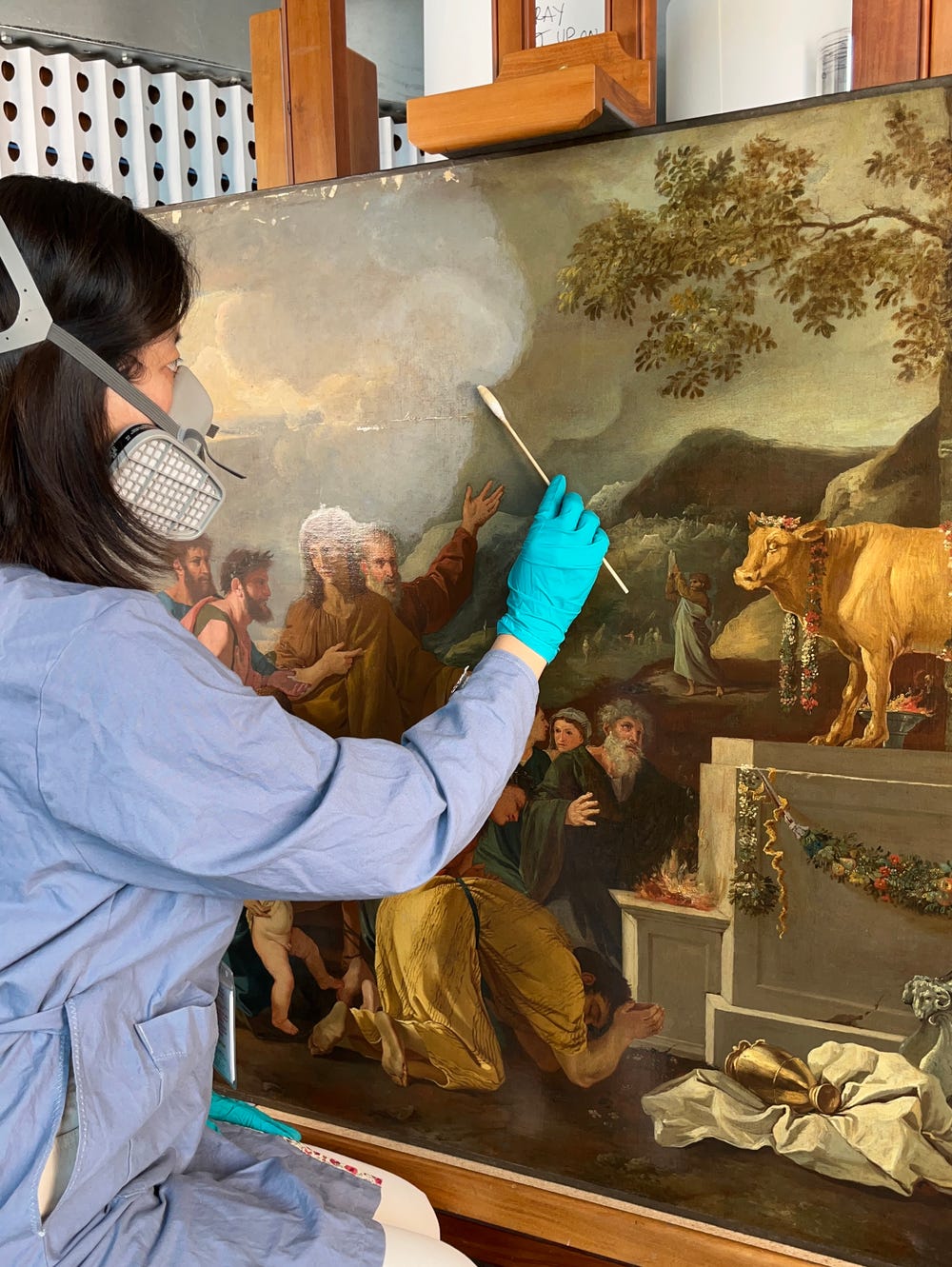Conserving Anna Vaughn Hyatt Huntington’s “Joan of Arc” at the Legion of Honor
By Jane Williams
August 20, 2020
In 2019 the monumental bronze statue of Joan of Arc, which sits on a granite base outside the Legion of Honor’s main entrance, underwent a major conservation treatment. The sculpture is a work by Anna Vaughn Hyatt Huntington, and donated by the artist and her husband, Archer Huntington, in 1926, just a few years after their marriage and the opening of the Legion of Honor.
Marion Boyd Allen, Portrait of Anna Vaughn Hyatt, 1915. Oil on canvas, 65 x 40 in. (165.1 x 101.6 cm). Collection of Maier Museum of Art at Randolph College, Lynchburg, VA, M.1922.1
Earlier in her career, Hyatt had achieved enough artistic recognition and financial independence with her small-scale sculptures of animals to fund her further studies in Europe. While in France, she pursued a longstanding interest in Joan of Arc, researching her life and visiting the sites that were central to the Saint's story. For her first monumental sculpture, Hyatt created a statue of the saint on horseback. She entered a full-scale plaster version of this sculpture in the 1910 Salon of Paris and was awarded an honorable mention, despite the jury’s doubts that a woman could have completed this massive artwork by herself. This sculpture caught the eye of New York’s Joan of Arc Statue Commission, a group planning a plaza in Riverside Park to foster friendship between the United State and France. Dedicated in 1915, Hyatt’s bronze sculpture of Joan of Arc was the first commission for a public sculpture in New York by a woman artist and also the first dedicated to a woman.
Hyatt’s “Joan of Arc” and another of her equestrian works, “El Cid,” form central elements of the Legion of Honor’s architecture and site in Lincoln Park
Anna Vaughn Hyatt Huntington’s “Joan of Arc” outside the Legion of Honor, prior to conservation
The condition of the Legion statue’s structure and surface presented interesting conservation challenges. First, the saint’s original sword, spurs, and elements of her horse’s trappings had been missing for decades. Though the sword had been replaced with an aluminum replica in the 1970s, the replica had blown off during a winter storm in 2017. This loss accelerated the need to fabricate more robust and accurate replacements for the sword and the sculpture’s other missing elements. In addition, the sculpture’s surface had not been maintained consistently over the years and now needed comprehensive treatment. Protective surface coatings and the original patina had degraded, leaving the surface uneven in appearance and unprotected from the elements.
Remaining hilt of the sculpture’s sword, prior to conservation
In order to find an appropriate model to serve as a template for re-creating the sword and the other missing elements, I tracked down the five full-scale casts of the statue. The original cast from 1915 remains in Riverside Park in New York City. Three others stand in public sites in Gloucester, Massachusetts (where Hyatt lived and maintained a studio); Québec City, Québec, Canada; and Blois, France. As luck would have it, Blois is the hometown of Fine Arts Museums objects conservator Céline Chrétien, and her parents contributed images of the sculpture there. However, as the only version that retains its original sword, the New York casting was the best model for replicating the missing parts. Moreover, New York City has the most developed program and staff for the conservation and maintenance of its public sculptures, yielding the most resources and expertise for a productive collaboration with the Fine Arts Museums’ conservators.
From left: New York City, Blois, and Québec City sculptures. Photographs by Jim Henderson (wikimedia commons), Céline Chrétien, René Bélanger (flickr)
I coordinated this collaboration with the New York City parks department’s director of art and antiquities, Jonathan Kuhn, and his team from the Citywide Monument Conservation Program. This was a complex process, both technically and logistically, particularly because the height and public setting of the New York original cast limited easy access to it. Indeed, the support and collaboration of the New York team was critical to the project. They helped arrange the necessary permits, get appropriate lift equipment in place, and identify people in New York to take the needed measurements and molds from the Riverside Park sculpture.
Particularly important to the conservation project was the work of John Saunders, a conservator with New York City’s Citywide Monument Conservation Program. Saunders acted as liaison between the New York and San Francisco teams, demonstrating the collaboration that is an important part of conservation work. Especially in objects conservation, the broadest and most varied conservation specialty, conservators routinely consult with colleagues on materials and techniques that are outside the scope of their individual specializations and experience. Saunders brought many kinds of valuable expertise to the project. Not surprisingly, in his time with the New York City parks department, Saunders has replaced many swords and developed techniques to make them more robust and securely attached than the originals. Through both conservation and his own artistic work as a metal sculptor, he is expert in a range of traditional casting and fabrication techniques as well as with the surface patination of metals.
Conservator John Saunders with Joan of Arc, after attaching the new sword to the Legion’s sculpture
Saunders made a preliminary visit to San Francisco to prepare for casting parts in bronze. On the visit, he tested the fit of a polymer cast from the molds taken of the New York sculpture. He took careful measurements for other elements, like the bridle and flat reins, that he would fabricate from flat bronze stock. Finally, he removed the last remnants of the aluminum sword and its attachment, then prepared the hilt to receive the new sword. Back in New York, Saunders fabricated the new bridle and straps and worked with a foundry in Brooklyn to cast the new sword and reins.
When Saunders returned to San Francisco with the replacement parts, scaffolding was erected around the sculpture. Saunders led the team of conservators Céline Chrétien and Jena Hirschbein and graduate intern Emily Rezes. They first used a combination of paint stripper and pressure washing to remove the deteriorated coatings from the sculpture’s surface.
From left: Test-fitting the polymer cast for the replacement parts; pre-treatment with the new bronze parts sitting next to the figure
After Saunders attached the newly fabricated parts, the conservators addressed the second issue: the statue’s surface patina. Historic outdoor bronze sculptures are finished with applied patinas. In patination, heat and acids are used to induce controlled chemical reactions with the metal to form thin corrosion layers on the surface.
These corrosion or ‘patina’ layers have a protective function as well as an aesthetic one. The patina forms an inert layer that protects the metal from reacting with moisture, salts, and pollution in the air around it.
John Saunders patinates the sculpture with a roofer’s torch
Patinas can have a wide range of colors, depending on the metal and chemicals used. A green patina remained preserved on the most protected areas of the sculpture, so the conservation team decided this would be the patina applied to integrate worn areas and new metal parts with the rest of the surface. Over several days, the team carefully used the intense heat of roofer’s torches and the sensitive application of chemical solutions to seemingly “paint” the surface with a thin layer of green corrosion.
From left: Almost done! Replacement elements attached, before hot wax application; after treatment
The next step in the treatment was to apply hot wax, which, when cool, protects the metal and patina. It penetrates and seals pores in the surface and saturates and deepens the surface color. To apply the wax, the torches were used again to heat the metal and open the pores in its surface. A solid block of specially mixed wax was swiped across the heated metal and melted onto the surface, and the torch and brushes were used to evenly distribute the wax across the sculpture. With the thin coating of wax, the patina took on a deep, forest green color. Rain and wind degrade the wax over time, so cleaning and reapplication of wax will be part of the sculpture’s regular maintenance. Taking care of the statue’s pedestal is also critical to the appearance and stability of the artwork. The final steps of the treatment were to reduce biological and copper staining on the granite base and re-point the mortar joints between the blocks of stone. With this care, the sculpture is ready for the Legion of Honor’s upcoming centennial in 2024.
“Joan of Arc” after bronze treatment
Text by Jane Williams, director of Conservation.
Learn more about conservation at the Legion of Honor.
Further Reading:
Anne Higonnet, Goddess, Heroine, Beast: Anna Hyatt Huntington's New York Sculpture, 1902–1936. columbia.edu/cu/wallach/exhibitions/Anna-Hyatt-Huntington/essays
